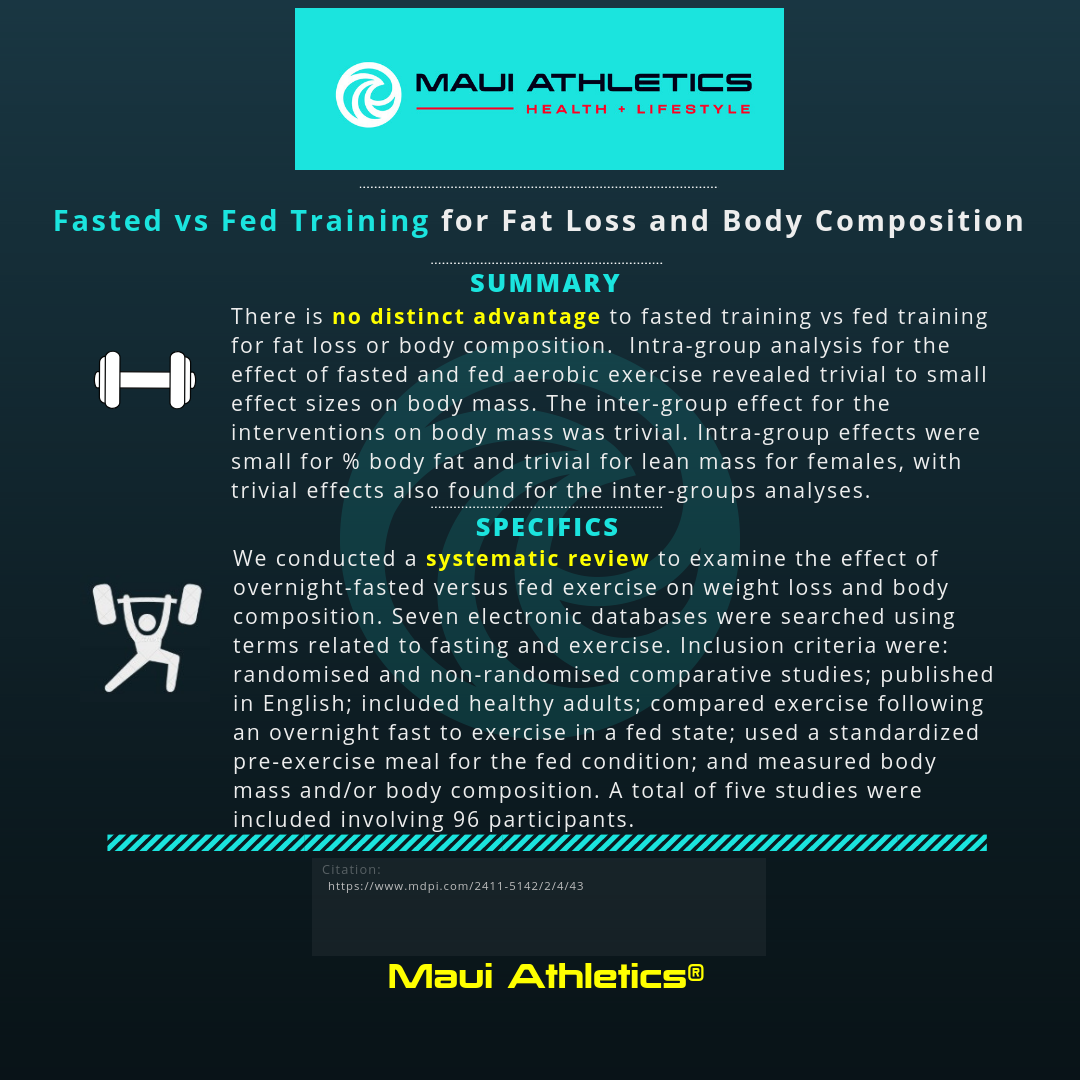Fasted vs Fed Training for Fat Loss
Fasted vs Fed: Micro-Entry
Regardless of fasted or fed, your body will need to use all 3 energy systems (ATP/PCr, glycolytic, and oxidative) whether you have eaten or not.
Fuel use will be based on intensity level of training rather than quantity of food consumed prior to training. In a fed state, the body has an increased thermic effect from food. In a fasted state, the body uses more endogenous fuels. All things considered, this likely results in a net wash and explains why being fasted does not increase fat loss.
This systemic review does not support a distinct advantage to fasted training vs fed training for fat loss or positive changes in body composition. Performing exercise in the fasted state did not promote weight loss or changes in lean/fat mass. There was also no detrimental effect found on body mass and body composition when utilizing this practice (i.e. there is no need for strict pre or intra-workout nutrition when training after an overnight fast).
These results demonstrate the fasted or fed state does not augment post-exercise metabolism following acute sprint interval training (SIT) in a way that would favour fat loss following training. • Energy expenditure was similar between conditions, while fat oxidation was significantly greater in FED at 3 h post-exercise • Appetite perceptions were significantly lower in FED, however energy intake was not different between conditions • Current findings suggest that performing SIT in the fed or fasted state would not affect fat loss following training.
https://www.ncbi.nlm.nih.gov/pubmed/31553895
Fasted, fed, or protein-enhanced cardio all work similarly for fat loss. Protein-enhanced cardio may minimize losses of fat free mass.
doi: 10.1519/SSC.0000000000000565








